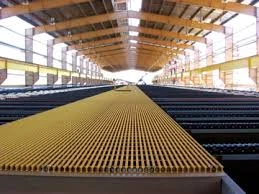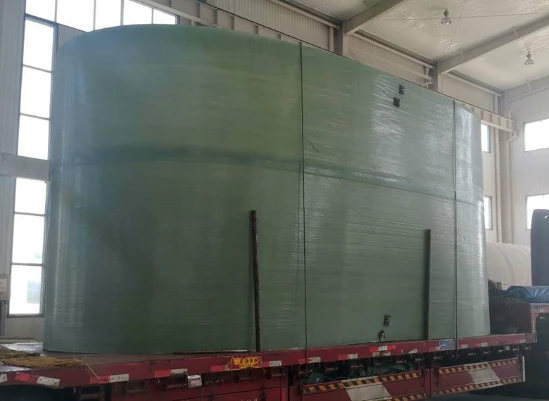
-
 Afrikaans
Afrikaans -
 Albanian
Albanian -
 Amharic
Amharic -
 Arabic
Arabic -
 Armenian
Armenian -
 Azerbaijani
Azerbaijani -
 Basque
Basque -
 Belarusian
Belarusian -
 Bengali
Bengali -
 Bosnian
Bosnian -
 Bulgarian
Bulgarian -
 Catalan
Catalan -
 Cebuano
Cebuano -
 China
China -
 China (Taiwan)
China (Taiwan) -
 Corsican
Corsican -
 Croatian
Croatian -
 Czech
Czech -
 Danish
Danish -
 Dutch
Dutch -
 English
English -
 Esperanto
Esperanto -
 Estonian
Estonian -
 Finnish
Finnish -
 French
French -
 Frisian
Frisian -
 Galician
Galician -
 Georgian
Georgian -
 German
German -
 Greek
Greek -
 Gujarati
Gujarati -
 Haitian Creole
Haitian Creole -
 hausa
hausa -
 hawaiian
hawaiian -
 Hebrew
Hebrew -
 Hindi
Hindi -
 Miao
Miao -
 Hungarian
Hungarian -
 Icelandic
Icelandic -
 igbo
igbo -
 Indonesian
Indonesian -
 irish
irish -
 Italian
Italian -
 Japanese
Japanese -
 Javanese
Javanese -
 Kannada
Kannada -
 kazakh
kazakh -
 Khmer
Khmer -
 Rwandese
Rwandese -
 Korean
Korean -
 Kurdish
Kurdish -
 Kyrgyz
Kyrgyz -
 Lao
Lao -
 Latin
Latin -
 Latvian
Latvian -
 Lithuanian
Lithuanian -
 Luxembourgish
Luxembourgish -
 Macedonian
Macedonian -
 Malgashi
Malgashi -
 Malay
Malay -
 Malayalam
Malayalam -
 Maltese
Maltese -
 Maori
Maori -
 Marathi
Marathi -
 Mongolian
Mongolian -
 Myanmar
Myanmar -
 Nepali
Nepali -
 Norwegian
Norwegian -
 Norwegian
Norwegian -
 Occitan
Occitan -
 Pashto
Pashto -
 Persian
Persian -
 Polish
Polish -
 Portuguese
Portuguese -
 Punjabi
Punjabi -
 Romanian
Romanian -
 Russian
Russian -
 Samoan
Samoan -
 Scottish Gaelic
Scottish Gaelic -
 Serbian
Serbian -
 Sesotho
Sesotho -
 Shona
Shona -
 Sindhi
Sindhi -
 Sinhala
Sinhala -
 Slovak
Slovak -
 Slovenian
Slovenian -
 Somali
Somali -
 Spanish
Spanish -
 Sundanese
Sundanese -
 Swahili
Swahili -
 Swedish
Swedish -
 Tagalog
Tagalog -
 Tajik
Tajik -
 Tamil
Tamil -
 Tatar
Tatar -
 Telugu
Telugu -
 Thai
Thai -
 Turkish
Turkish -
 Turkmen
Turkmen -
 Ukrainian
Ukrainian -
 Urdu
Urdu -
 Uighur
Uighur -
 Uzbek
Uzbek -
 Vietnamese
Vietnamese -
 Welsh
Welsh -
 Bantu
Bantu -
 Yiddish
Yiddish -
 Yoruba
Yoruba -
 Zulu
Zulu
Durable GRP/FRP Transport Tanks Lightweight & Corrosion-Resistant
- Introduction to GRP/FRP Transport Tanks
- Technical Advantages Over Traditional Materials
- Market Comparison: Leading Manufacturers
- Customization Options for Industry-Specific Needs
- Case Study: Successful Deployment in Chemical Logistics
- Maintenance and Longevity Best Practices
- Future Trends in Fiberglass Transport Solutions

(grp transport tank)
GRP Transport Tank Innovations Redefine Industry Standards
The global demand for GRP transport tanks has surged by 18% annually since 2020, driven by their superior corrosion resistance and weight-to-strength ratio. Industries handling aggressive chemicals, fuels, or food-grade materials increasingly favor FRP transport tanks over stainless steel alternatives, citing 40% lower lifecycle costs. Recent advancements in resin formulations now enable fiberglass transport tanks to withstand temperatures up to 150°C while maintaining structural integrity.
Technical Advantages Over Traditional Materials
Fiberglass-reinforced plastic (FRP) demonstrates 3× greater impact resistance compared to polyethylene tanks in third-party stress tests. Key performance metrics include:
- Zero permeability to hydrocarbons and acids
- 1.2 g/cm³ density (55% lighter than steel equivalents)
- 30-year service life with proper maintenance
Market Comparison: Leading Manufacturers
| Vendor | Price Range (USD) | Max Capacity | Certifications |
|---|---|---|---|
| FiberTech Industries | $12,000–$45,000 | 35,000L | ASME, FDA, AD2000 |
| PolyTank Solutions | $9,500–$38,000 | 28,000L | ISO 9001, NSF/ANSI 61 |
Customization Options for Industry-Specific Needs
Manufacturers now offer modular designs with 15+ configuration variables:
- Wall thickness customization (6mm–25mm)
- Multiple port configurations (top/side/bottom)
- Optional heating/cooling jackets
Case Study: Successful Deployment in Chemical Logistics
A European chemical transporter achieved 92% operational cost reduction by replacing 14 stainless steel tankers with FRP units. Key outcomes over 24 months:
- Maintenance hours decreased from 200 to 32 annually
- Payload capacity increased by 28%
- Zero leakage incidents reported
Maintenance and Longevity Best Practices
Proper cleaning protocols extend service life by 40%. Essential guidelines include:
- pH-neutral cleaners for interior surfaces
- Annual ultrasonic thickness testing
- UV-resistant gel coat reapplication every 5–7 years
Fiberglass Transport Tanks: Pioneering Sustainable Logistics
With 73% of transport operators now specifying GRP/FRP solutions for new fleets, the market anticipates 6.2% CAGR through 2030. Emerging smart tank systems integrate IoT sensors for real-time condition monitoring, further enhancing the value proposition of fiberglass transport tanks in modern supply chains.

(grp transport tank)
FAQS on grp transport tank
Q: What is a GRP transport tank?
A: A GRP (Glass Reinforced Plastic) transport tank is a lightweight, corrosion-resistant container made from fiberglass and resin. It is designed to safely transport liquids, chemicals, or food-grade materials. Its durability and low maintenance make it ideal for industrial and commercial use.
Q: How does a GRP tank differ from an FRP transport tank?
A: GRP (Glass Reinforced Plastic) and FRP (Fiberglass Reinforced Plastic) transport tanks are essentially the same, both using fiberglass and resin. The terms are interchangeable, with regional preferences influencing naming. Both offer high strength-to-weight ratios and chemical resistance.
Q: What are common applications for fiberglass transport tanks?
A: Fiberglass transport tanks are widely used for hauling chemicals, potable water, fuels, and food products. They are popular in agriculture, wastewater treatment, and oil/gas industries due to their non-reactive properties. Customizable designs suit diverse operational needs.
Q: Why choose GRP over metal for transport tanks?
A: GRP tanks outperform metal in corrosion resistance, especially for acidic or alkaline substances. They are 30-40% lighter, reducing fuel costs, and require no welding or rust-proofing. Longevity in harsh environments further justifies their preference.
Q: How to maintain a fiberglass transport tank?
A: Regular inspections for cracks, UV damage, or resin degradation are crucial. Clean with mild detergents, avoid abrasive tools, and follow manufacturer guidelines for chemical exposure. Proper maintenance ensures decades of service life with minimal repairs.
Latest news
-
Innovative Tungsten Carbide Gold Mining Bits for Enhanced Drilling EfficiencyNewsMay.29,2025
-
High-Temp Fiberglass, GRP & FRP Products for Steel Smelting PlantsNewsMay.29,2025
-
FRP Panels Durable FRP Trough Covers & Moisture Traps SolutionsNewsMay.29,2025
-
FRP Desalination Pipes & Fittings Efficient Water Treatment SolutionsNewsMay.29,2025
-
Fiberglass Clarifier Systems Efficient Water & Solid Treatment SolutionsNewsMay.29,2025
-
Fiberglass Water Tanks Durable GRP & Fiber Water Storage SolutionsNewsMay.29,2025









